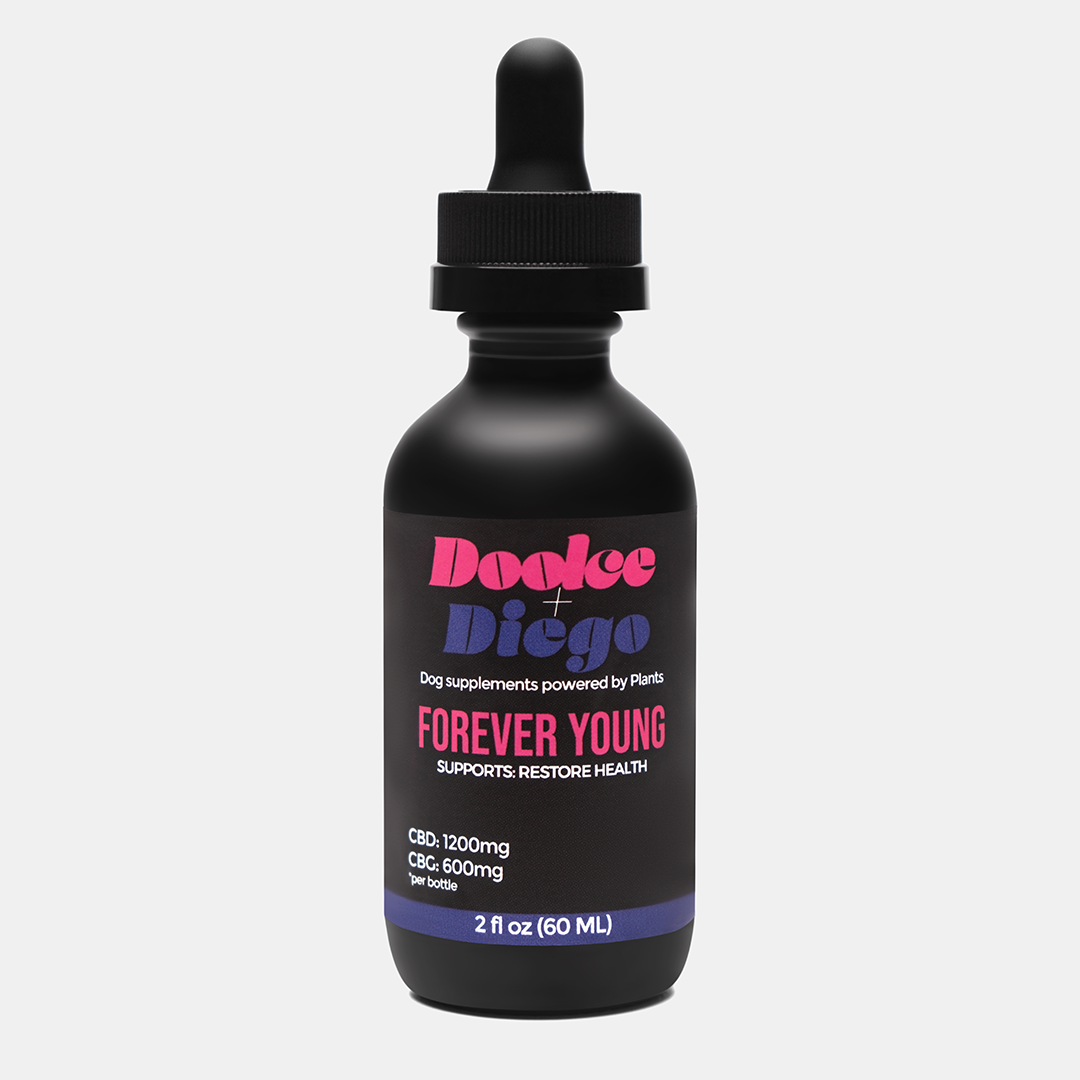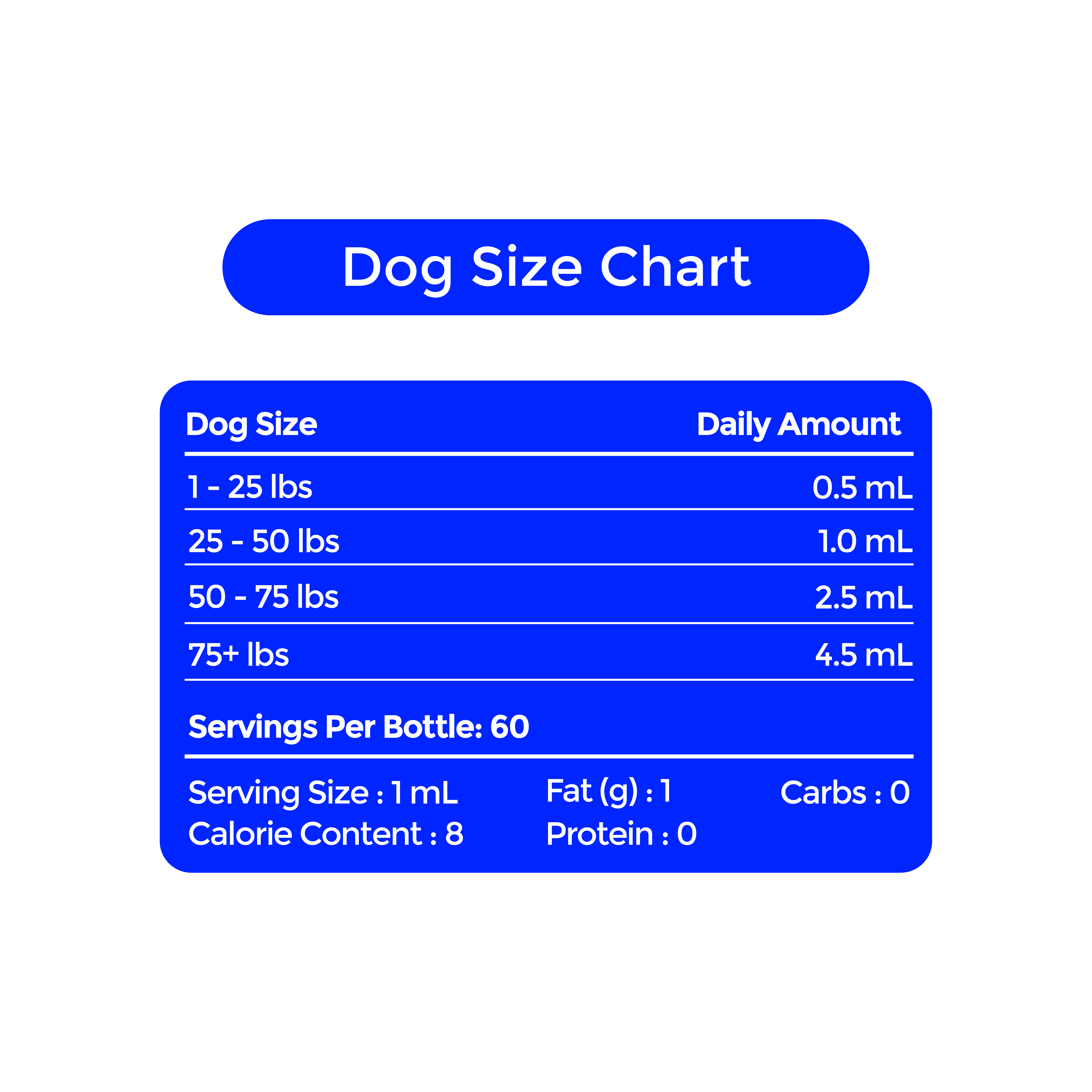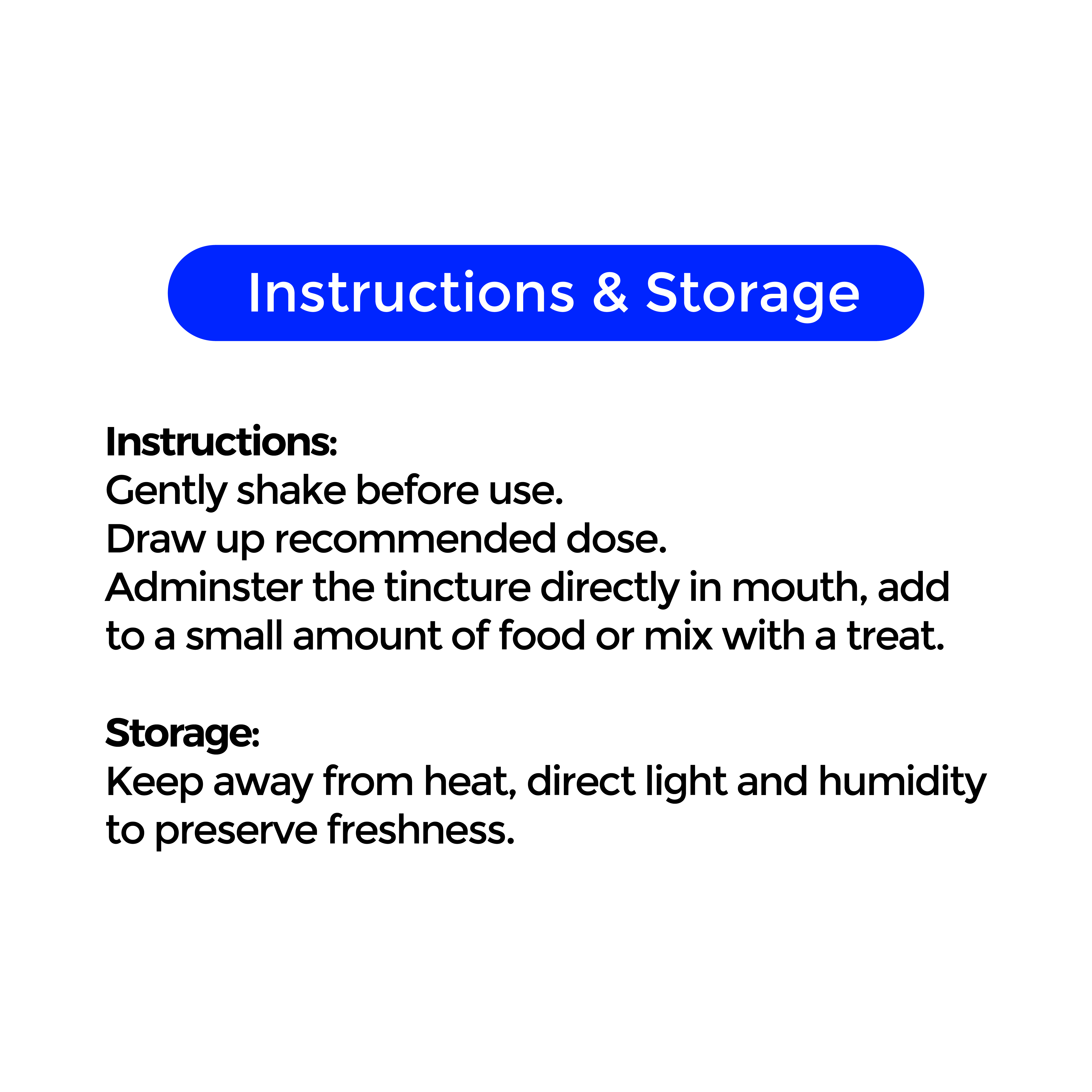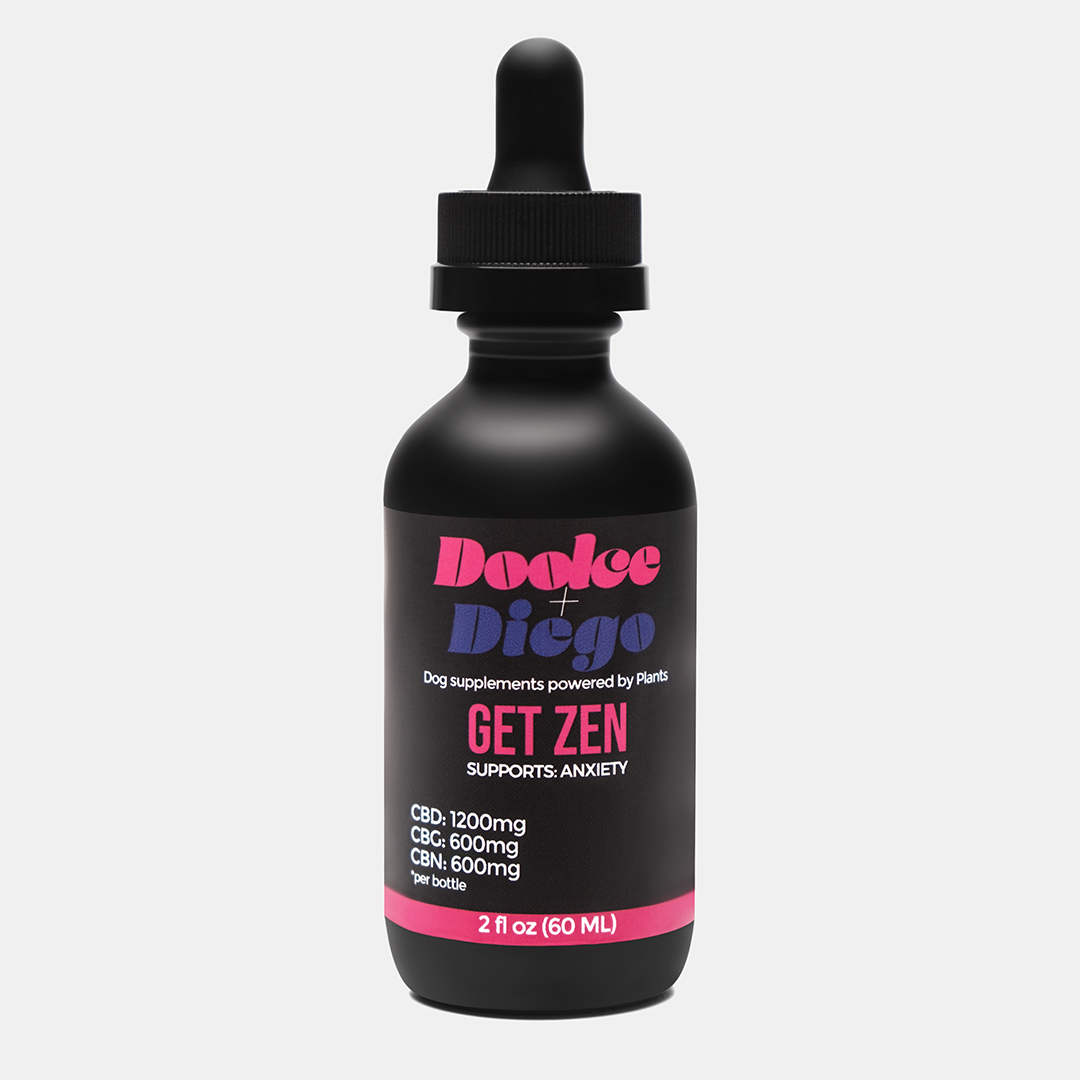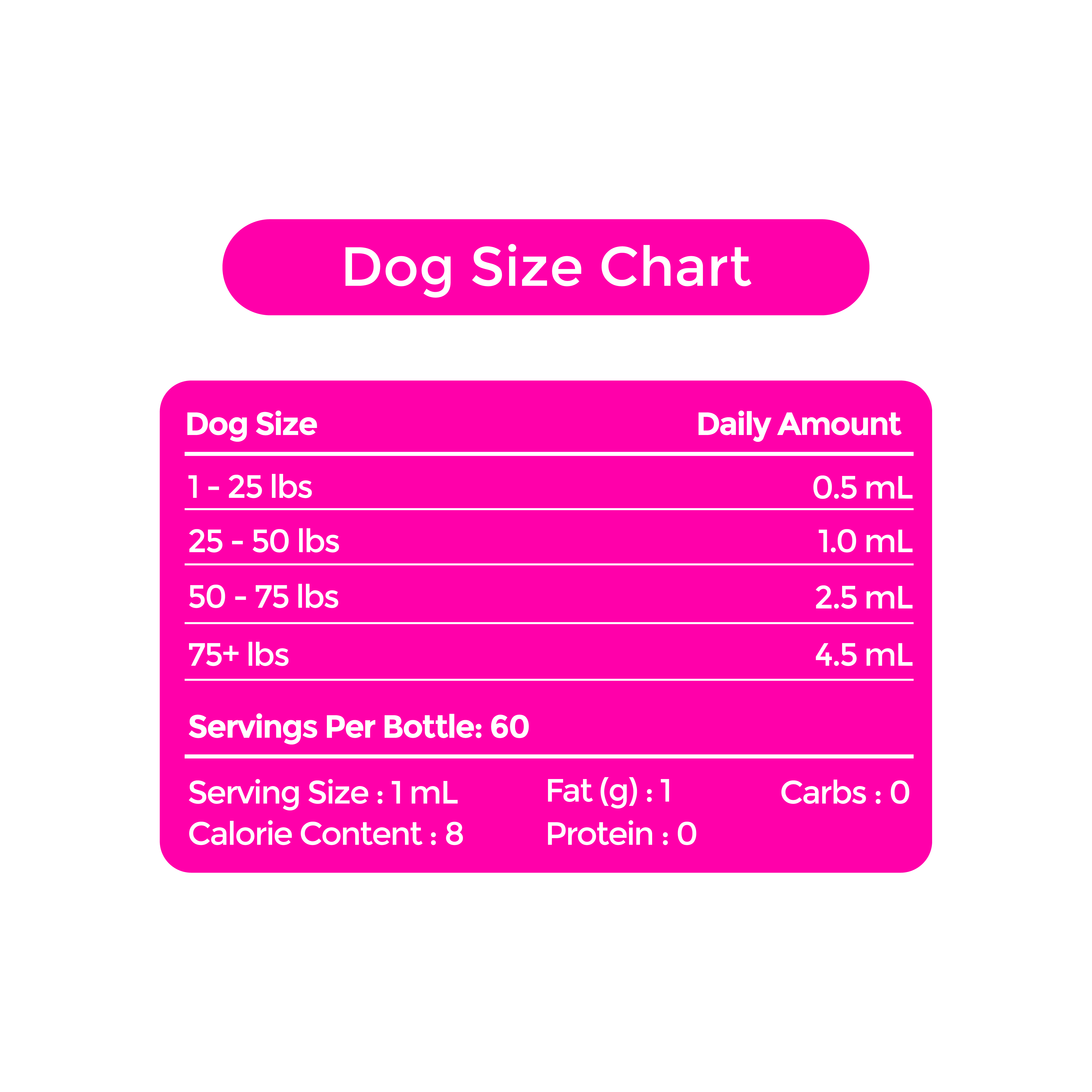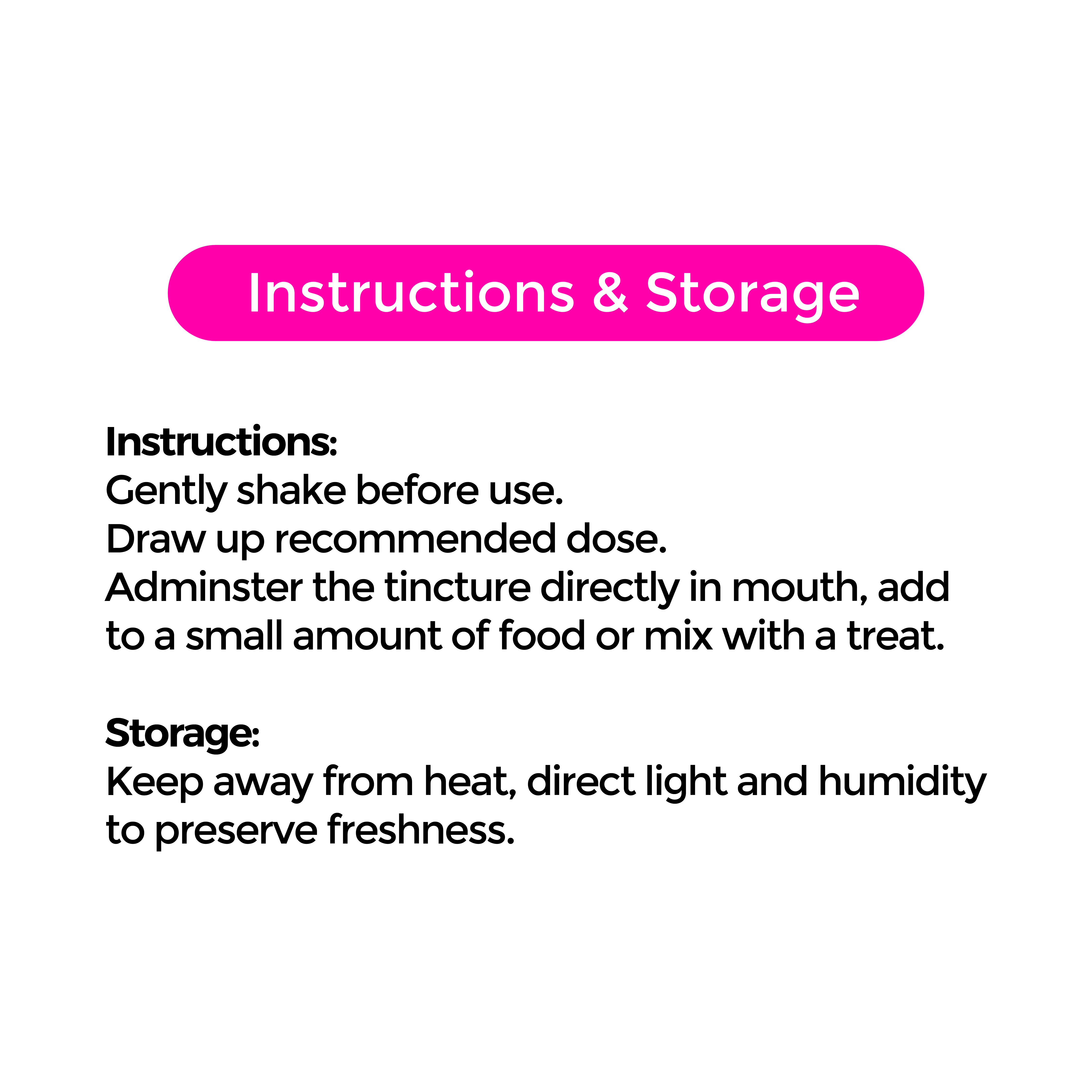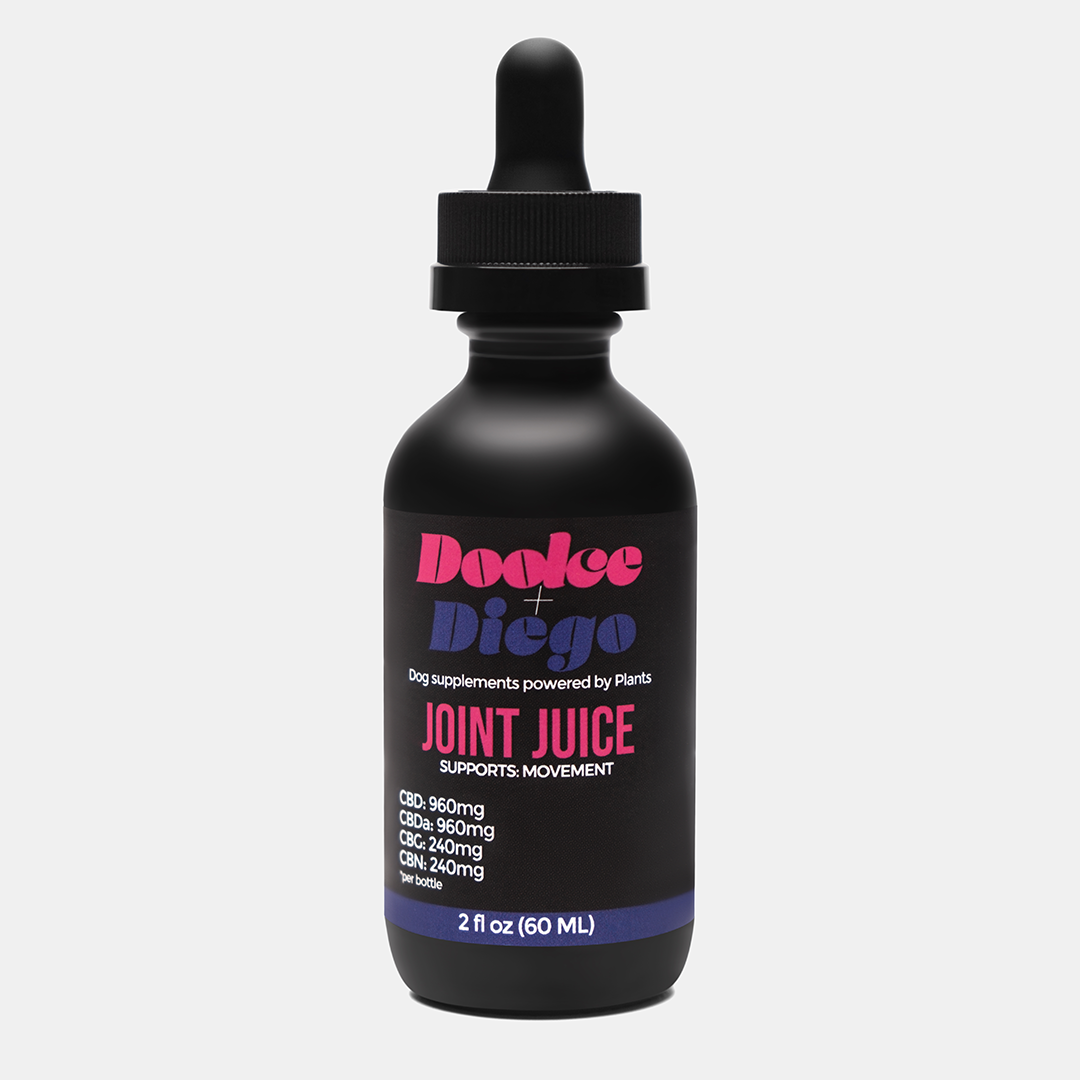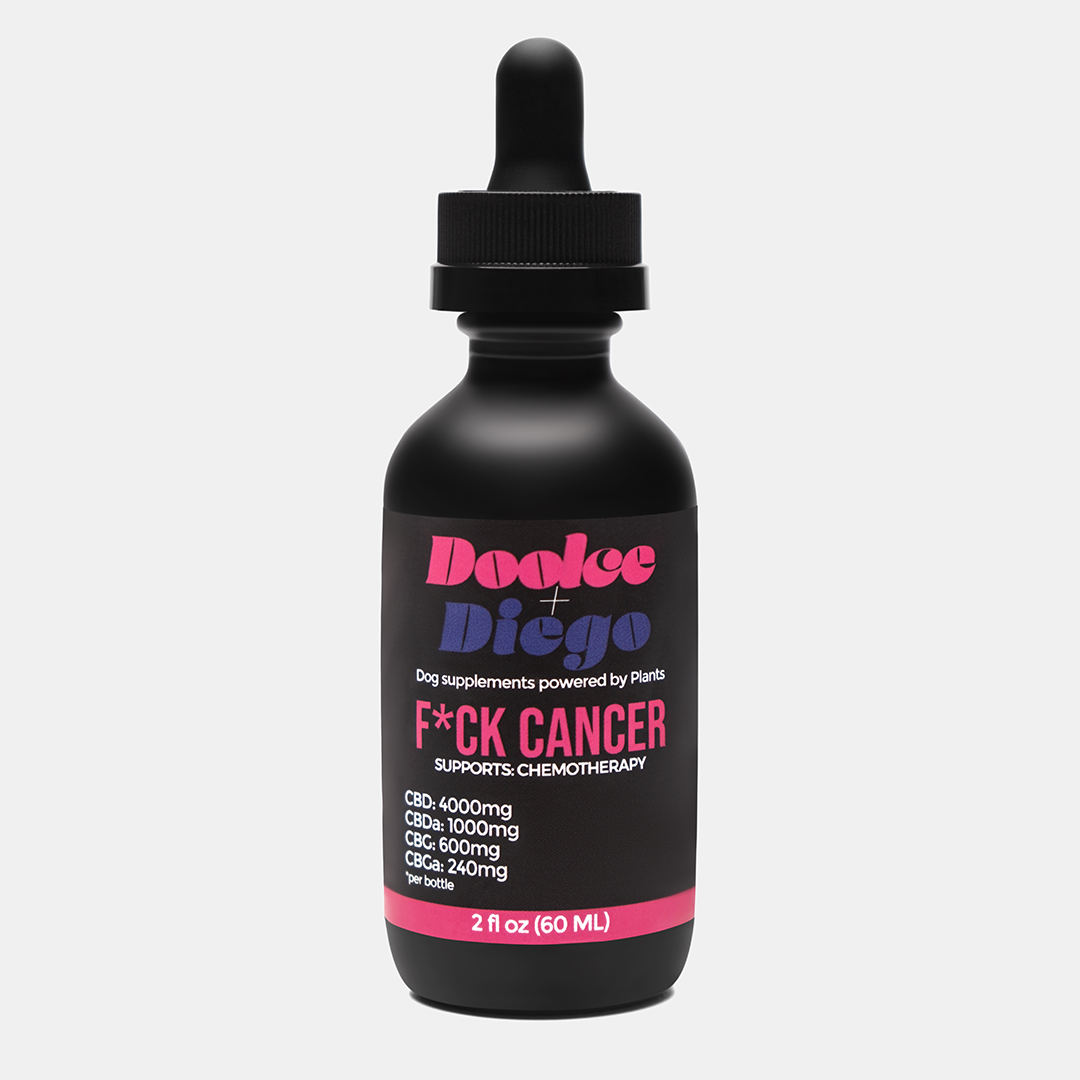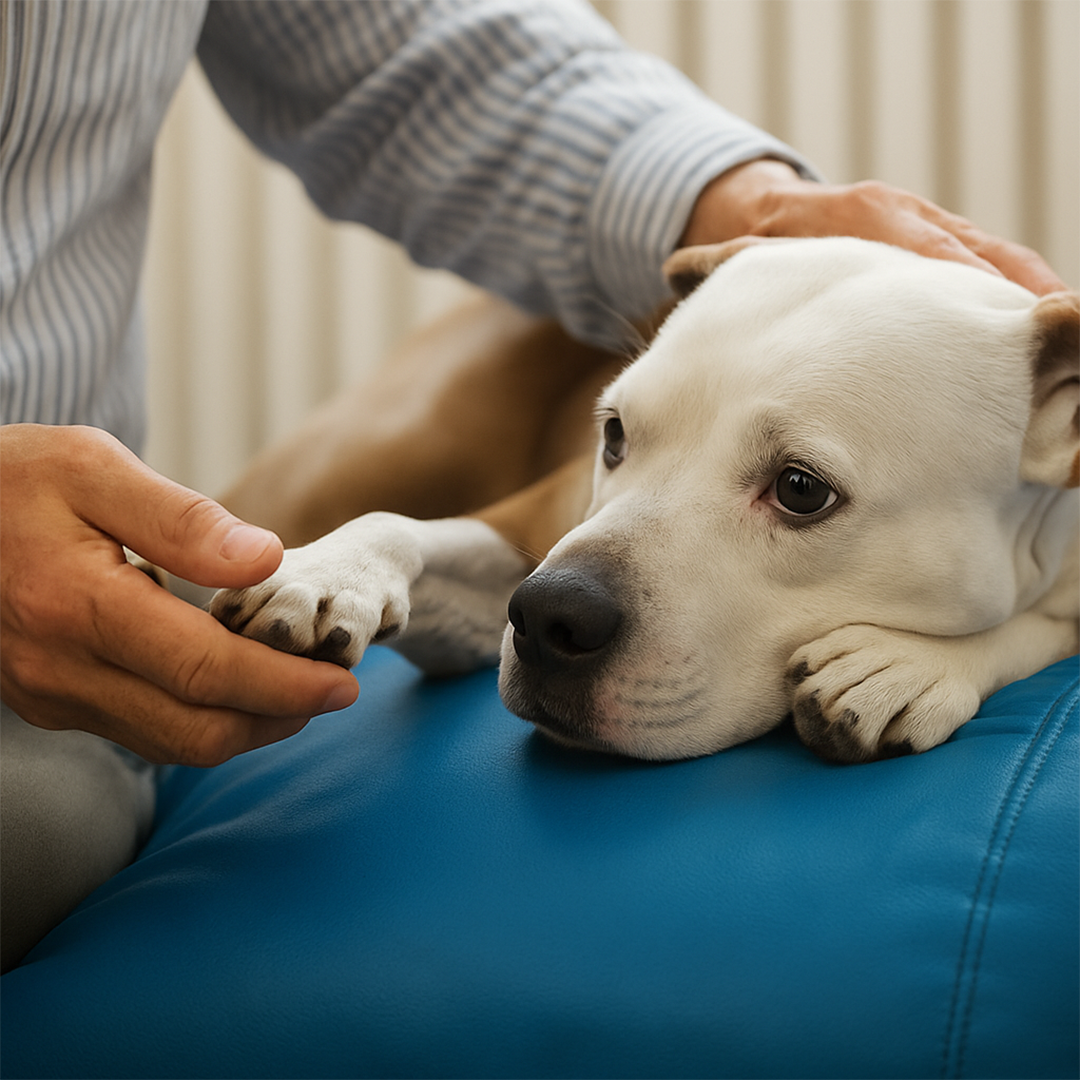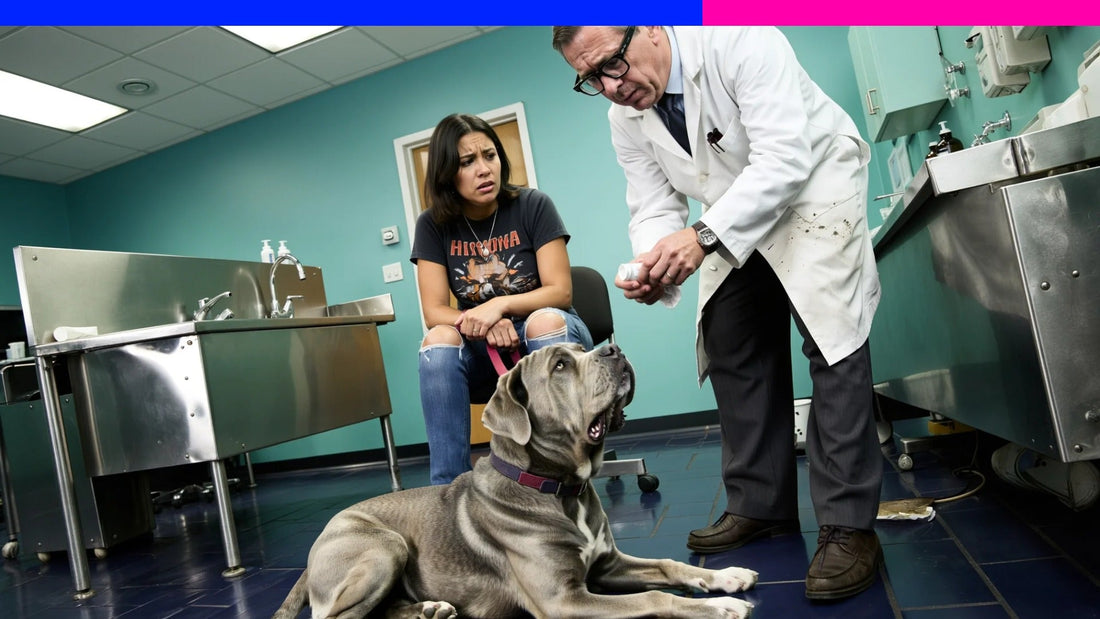
Trazodone for Dogs: What to Know Before Your Doctor Writes that Prescription
You’re at the vet. Your dog’s vibrating with anxiety, the room smells like antiseptic and fear, and suddenly you hear the words:
“We could try Trazodone.”
If your first reaction is “Wait, isn’t that for people?” — you’re not wrong.
Trazodone is a human antidepressant. But it’s also increasingly prescribed by vets to help dogs manage everything from post-surgery recovery to noise phobias, reactivity, and travel stress.
But just because it’s common doesn’t mean it’s casual.
Before you pop that first pill, here’s what to know:
✔️ How it works
✔️ What it helps (and doesn’t help)
✔️ Side effects to watch for
✔️ Whether it's a short-term crutch or long-term tool
✔️ Why every medication should come with a plan (not just a prescription)
Because managing your dog’s mental health shouldn’t feel like trial and error. It should feel informed, intentional — and actually helpful.
Let’s dig in.
1. What Is Trazodone, and Why Are Vets Using It for Dogs?
Trazodone is a human antidepressant that belongs to a class of drugs called serotonin antagonists and reuptake inhibitors (SARIs). In people, it's used to treat depression, anxiety, and insomnia.
In dogs? It's not about treating depression — it's about managing situational anxiety, stress, and reactivity.
Common reasons your vet might prescribe trazodone:
- Thunderstorm or fireworks anxiety
- Vet visit or grooming stress
- Post-surgery rest (to help keep dogs calm while they recover)
- Travel anxiety or crate distress
- General fearfulness or behavioral reactivity
It's not FDA-approved for dogs (yet), but it’s frequently prescribed off-label — and many vets now consider it part of the behavioral toolbox.
2. How Does Trazodone Work in Dogs?
Trazodone increases the amount of serotonin (a feel-good neurotransmitter) in the brain. More serotonin = more calm, more chill, less flipping out when the UPS truck rolls by.
It doesn’t sedate your dog into a zombie — when dosed correctly, it takes the edge off their stress without changing their personality.
Onset + Duration:
- Starts working in 1–2 hours
- Effects last 4–12 hours, depending on dose and your dog’s metabolism
- Can be used short-term (e.g. fireworks) or long-term (e.g. chronic anxiety)
3. Side Effects You Should Actually Watch For
No prescription is risk-free. Here are the most common side effects of trazodone in dogs:
- Lethargy or drowsiness
- Gastro issues (vomiting, diarrhea)
- Disinhibition (some dogs act weirder before they get calmer)
- Agitation (especially if dose is too high)
Rare but serious risks:
- Serotonin syndrome (when used with other serotonin-affecting drugs like fluoxetine)
- Low blood pressure or disorientation
🚨 Always talk to your vet before mixing trazodone with other meds, especially antidepressants, sedatives, or supplements like CBD.
4. Is Trazodone Safe for Long-Term Use in Dogs?
Yes — but with caveats.
Trazodone can be part of a long-term plan, but it shouldn’t be the only plan. It’s most effective when combined with behavioral work, enrichment, and functional wellness tools like calming supplements or diet changes.
In other words, medication can open the door, but it won’t walk your dog through it.
5. What to Ask Your Vet Before Starting Trazodone
- What dose is right for my dog’s size, breed, and situation?
- Should I give it with food or on an empty stomach?
- What side effects should I track and report?
- Is this a one-time dose or a long-term prescription?
- Could this interact with anything else my dog is taking?
You’re not annoying your vet — you’re advocating for your dog. Ask the questions.
Looking for Calmer Days Without the Prescription?
If you're exploring natural ways to support your dog’s mood and stress response, Doolce + Diego’s wellness lineup is designed to work with your dog’s biology — not override it.
A calming hemp oil blend with CBG, CBN, and CBD — formulated to ease anxious minds, gently.
Blueberry Chamomile Peanut Butter
Snackable support with chamomile and antioxidant-rich blueberries to help dogs wind down.
Final Tips: Don’t Just Mask the Symptoms
Trazodone can be an incredibly helpful bridge — but it’s not a fix-all. If your dog is struggling with stress, fear, or behavioral issues, it’s worth zooming out and looking at the full wellness picture:
-
✅ Training + behavior modification
-
✅ Routine + safe spaces
-
✅ Gut health (serotonin starts in the gut!)
-
✅ Natural calming support (CBD, functional ingredients)
For more dog wellness tips, tricks, and tea — dig into the latest from Bark Times.


